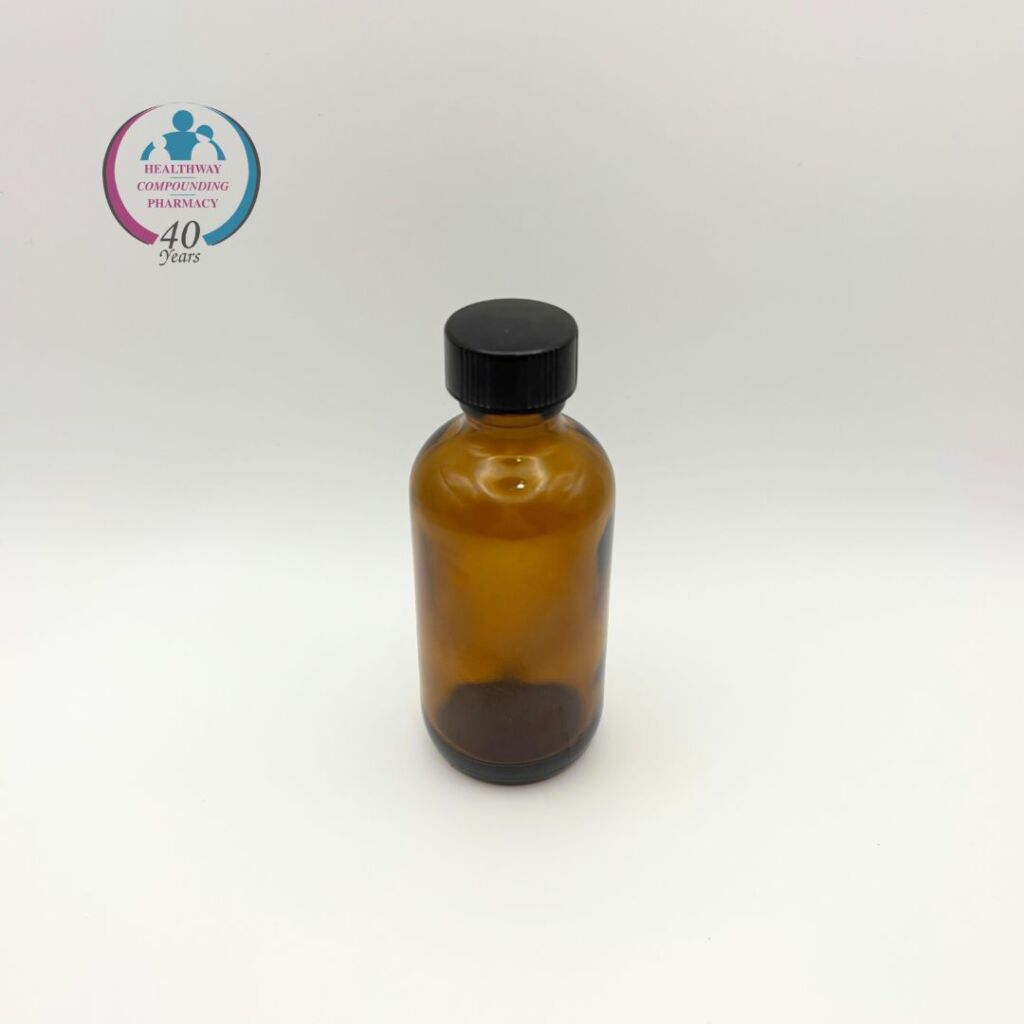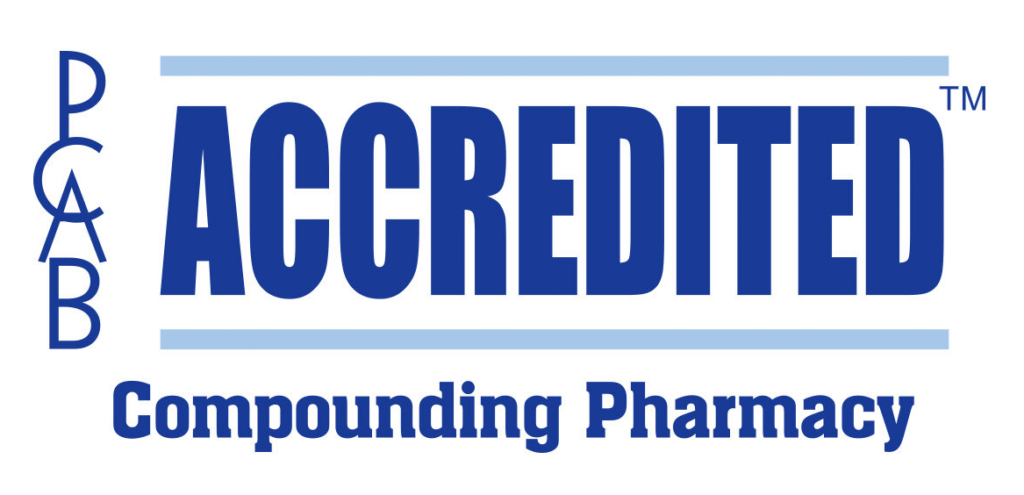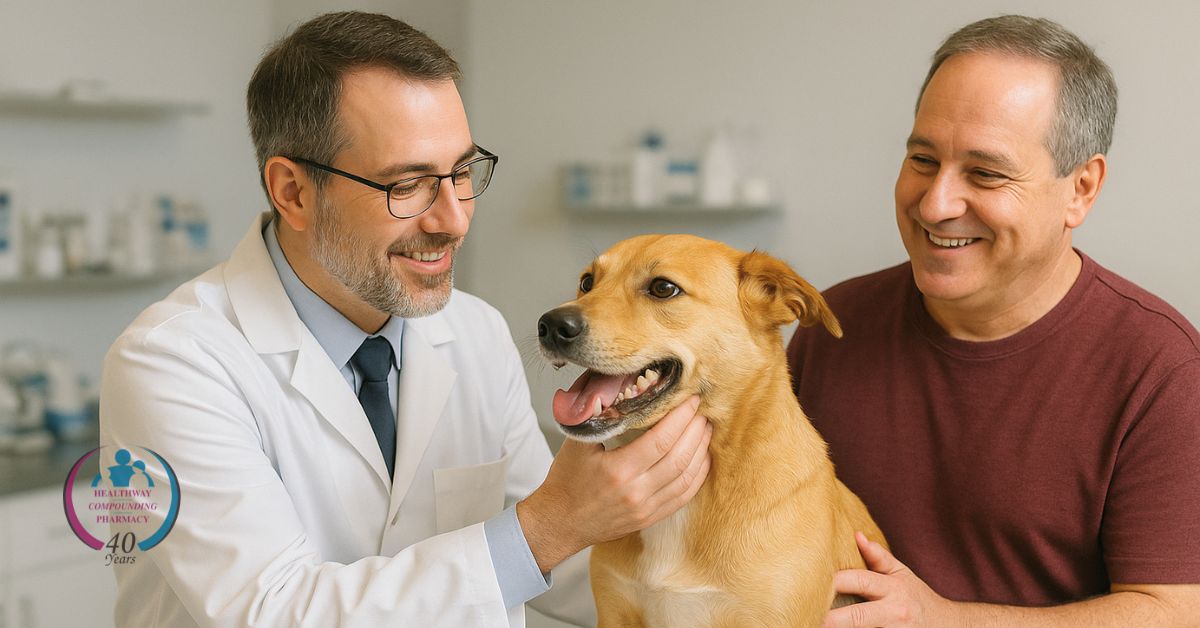How Michigan Veterinarians Partner with Compounding Pharmacies for Potentially Better Pet Medications
If you’ve ever struggled to get your dog to swallow a pill or watched your cat run at the sound of a medicine bottle, you’re not alone. Administering medications to animals can be tricky — and sometimes, what’s available at a traditional pharmacy just doesn’t cut it. That’s where veterinary compounding pharmacies come in.
Across northern Michigan — including areas like Alpena, Petoskey, Traverse City, and the Upper Peninsula — veterinarians often rely on specialized pharmacies like Healthway Compounding Pharmacy in Saginaw to create personalized medications for their patients. These custom prescriptions help ensure animals get the right dose, in the right form, with a flavor they’ll actually tolerate.
What is Veterinary Compounding?
Veterinary compounding is the process of preparing customized medications that meet the specific needs of an individual animal. A compounding pharmacist can adjust dosage strengths, combine multiple medications into one, or create alternative dosage forms — like flavored liquids, transdermal creams, or chewable treats.

For example, if a 6-pound Chihuahua needs a heart medication that only comes in a dose meant for a 50-pound dog, a compounding pharmacy can prepare an appropriate strength. Or if a cat refuses to take tablets, the medication can be converted into a chicken- or tuna-flavored oral suspension, or even a transdermal gel that gets absorbed through the skin.
Common Compounded Medications Vets in Michigan Prescribe
Healthway Compounding Pharmacy regularly receives veterinary prescriptions from clinics across Michigan for a variety of conditions.
Our veterinary medication compounding service includes a wide range of frequently requested medications for conditions such as anxiety, seizures, infections, thyroid disorders, gastrointestinal issues, and more.
In more rural parts of Michigan — from Escanaba to Bad Axe — access to pet medications isn’t always immediate. That’s why many veterinary clinics send prescriptions to Healthway, where we can ship medications directly to the clinic or the pet owner’s home.
Michigan veterinarians easily prescribe custom medications for their animal patients with Healthway via our Veterinary Prescription Order Form.
Veterinarians submit custom orders that include:
- Preferred medication strength and form
- Custom drug combinations
- Flavoring instructions
- Refill options
This ensures precision and safety, while also accommodating finicky or sensitive pets.
Explore different medication forms



The most commonly prescribed medications by Michigan veterinarians include, but are not limited to:
- Amitriptyline – Often prescribed for anxiety or behavioral disorders.
- Cisapride – Used to help gastrointestinal motility disorders.
- Diazepam – Helpful for anxiety or seizure control.
- Doxycycline – An antibiotic commonly for respiratory or skin infections.
- Fluoxetine – Helpful for behavioral issues, such as aggression or compulsive disorders.
- Gabapentin – Helpful for pain management or anxiety.
- Methimazole – Formulated for feline hyperthyroidism.
- Metronidazole – Used to address infections, particularly in the GI tract.
- Potassium Bromide – A key component in long-term seizure control.
- Prazosin – Often prescribed for urinary tract issues.
- Prednisolone – A corticosteroid to support inflammation or autoimmune conditions.
All of these can be compounded into easy-to-administer forms like flavored liquids (with options like beef, chicken, or fish), creams, capsules, or even suppositories — depending on the animal’s preferences and medical needs.
Specialized Otic and Dermatologic Preparations
Healthway also offers customized ear medications such as:
- Otic Gel containing Ciprofloxacin, Ketoconazole, and Triamcinolone — perfect for ear infections and inflammation.
- Otic Powder formulated with Boric Acid and Clotrimazole — ideal for addressing fungal or yeast-related ear issues.
Real-life example for compounds prescribed to veterinary patients:
- Hyperthyroidism in cats
- Methimazole, often compounded into transdermal gels or tuna-flavored liquids for easier dosing.
- Pain and anxiety in both dogs and cats
- Gabapentin, commonly prescribed for chronic pain, arthritis, or nerve issues. Healthway often prepares this in a flavored suspension or capsule.
- Amitriptyline, an antidepressant help with anxiety or overgrooming behaviors in cats.
- Inflammatory conditions and autoimmune disorders
- Prednisolone, a corticosteroid frequently prescribed for skin allergies, asthma, or IBD in pets. Compounded into oral liquids or capsules based on size and preference.
- Hormonal disorders like Cushing’s disease in dogs
- Trilostane, made into specific-strength capsules not found in retail drugstores.
These are just a few examples. Healthway also compounds medications like doxycycline, omeprazole, cisapride, and potassium bromide, all based on exact dosing and form requirements submitted by veterinarians.
Why Customization Matters: Formulation & Flavor
Getting the right formulation can make all the difference in whether a medication works — or ends up spit out on the floor.
Veterinary prescriptions often call for:
- Oral suspensions: Flavored to appeal to pets — tuna, chicken, beef, or banana — based on species and preference.
- Transdermal gels: Applied to the inner ear flap (pinna) in cats and absorbed through the skin. Ideal for pets who refuse pills.
- Mini capsules: Filled to the correct micro-dose for tiny dogs, cats, rabbits, or even exotic pets.
- Topical creams or ear drops: For localized medication application for infections, ear mites, or fungal issues.
Specify everything from strength and dosage form to preferred flavor. This level of customization isn’t just convenient — it can be the difference between a medication working and not being taken at all.
Clinical Evidence Behind Veterinary Compounding
Veterinary compounding isn’t just about convenience — it’s backed by evidence showing improved outcomes when medications are tailored to the patient.
A 2016 letter in the American Journal of Pharmaceutical Education mentioned how compounded medications can increase compliance in animal patients. Poor palatability or incorrect dosing can lead to noncompliance, especially when no suitable commercial product exists.
“...pharmacists with knowledge of compounding options for palatability, dosage adjustments, or commercially unavailable medications can improve owner compliance and patient health”
Additionally, a review from the Veterinary Clinics of North America: Exotic Animal Practice emphasized the value of compounding for species that have very specific pharmacokinetic needs (like birds, reptiles, or small mammals), where off-the-shelf medications are rarely suitable.
And in a 2019 study from The Pharma Innovation Journal, researchers found that compounded veterinary medicines improved both therapeutic success rates and owner satisfaction, particularly when dealing with behavioral medications, chronic illnesses, and multi-drug regimens.
Healthway: Michigan’s Animal Medication Compounding Pharmacy
Working with a compounding pharmacy allows Michigan veterinarians to go beyond the limitations of commercial medications.
It gives them flexibility to care for animals as individuals — whether it’s a cat that needs a topical thyroid med, a dog that refuses tablets, or a tiny ferret needing micro-dosing.

For over 40 years, Healthway Compounding Pharmacy has been helping veterinarians across northern Michigan. With ongoing PCAB accreditation and a fully equipped compounding lab, they continue to support better animal care, one custom prescription at a time.
What is PCAB Accreditation?
Working with a PCAB-accredited compounding pharmacy ensures the highest standards of quality, safety, and consistency in every prescription. PCAB (Pharmacy Compounding Accreditation Board) accreditation means the pharmacy has undergone rigorous inspections and adheres to USP <795> and <797> guidelines for non-sterile and sterile compounding.

For veterinarians and pet owners, this translates to greater peace of mind — knowing that each medication is prepared in a controlled environment, with verified ingredients and processes that prioritize patient safety.
References
Baird-Heinz, H. E., A’ndrea, L., Pelsor, F. R., Ranivand, L., & Hungerford, L. L. (2012). A systematic review of the safety of potassium bromide in dogs. Journal of the American Veterinary Medical Association, 240(6), 705-715. Link
Bellahsene, A. R. E. Z. K. I., & Forsgren, A. R. N. E. (1985). Effect of doxycycline on immune response in mice. Infection and immunity, 48(2), 556-559. Link
Bodnoff, S. R., Suranyi-Cadotte, B., Quirion, R., & Meaney, M. J. (1989). A comparison of the effects of diazepam versus several typical and atypical anti-depressant drugs in an animal model of anxiety. Psychopharmacology, 97, 277-279. Link
Coyner, K. S. (2019). Diagnosis and treatment of acute and chronic otitis. Clinical atlas of canine and feline dermatology, 323-343. Link
Di Cesare, F., Negro, V., Ravasio, G., Villa, R., Draghi, S., & Cagnardi, P. (2023). Gabapentin: clinical use and pharmacokinetics in dogs, cats, and horses. Animals, 13(12), 2045. Link
Fuller, R. W. (1996). The influence of fluoxetine on aggressive behavior. Neuropsychopharmacology, 14(2), 77-81. Link
Graham‐Mize, C. A., & Rosser, E. J. (2004). Bioavailability and activity of prednisone and prednisolone in the feline patient. Veterinary Dermatology, 15, 7-10. Link
Hasler, A. H., & Washabau, R. J. (1997). Cisapride stimulates contraction of idiopathic megacolonic smooth muscle in cats. Journal of Veterinary Internal Medicine, 11(6), 313-318. Link
Jacobson, L. S. (2002). Diagnosis and medical treatment of otitis externa in the dog and cat. Journal of the South African Veterinary Association, 73(4), 162-170. Link
Katz, R. J., & Hersh, S. (1981). Amitriptyline and scopolamine in an animal model of depression. Neuroscience & Biobehavioral Reviews, 5(2), 265-271. Link
Landsberg, G., & Seksel, K. (2016). Making sense of behavioral medications: a practical approach to their use in dogs and cats. Link
Macleod, B., Laven, L. J., Laven, R. A., & Hill, K. E. (2025). Understanding the current evidence base for the commonly recommended management strategies for recurrent feline idiopathic cystitis: a systematic review. New Zealand Veterinary Journal, 73(4), 233-245. Link
Ng, J., Steffensen, N., Battersby, I., Weese, J. S., Timofte, D., Toutain, P. L., … & Allerton, F. (2025). Understanding the rationale for metronidazole use in dogs and cats. Journal of Small Animal Practice, 1, 9. Link
Peterson, M. E., Kintzer, P. P., & Hurvitz, A. I. (1988). Methimazole treatment of 262 cats with hyperthyroidism. Journal of Veterinary Internal Medicine, 2(3), 150-157. Link
Roach, A. G., Lefèvre, F., & Cavero, I. (1978). Effects of prazosin and phentolamine on cardiac presynaptic α-adrenoceptors in the cat, dog and rat. Clinical and Experimental Hypertension, 1(1), 87-101. Link
Shmalberg, J., Montalbano, C., Morelli, G., & Buckley, G. J. (2019). A randomized double blinded placebo-controlled clinical trial of a probiotic or metronidazole for acute canine diarrhea. Frontiers in veterinary science, 6, 163. Link
Trepanier, L. A. (1995). Use of bromide as an anticonvulsant for dogs with epilepsy. Journal of the American Veterinary Medical Association, 207(2), 163-166. Link
Zhou, X. L., Han, Y., Mail, W. J., Liu, J., Wang, H., Feng, L., … & Zhao, J. J. (2015). Different doses and routes of Administration of Methimazole Affect Thyroid Status in methimazole-induced hypothyroidism in rats. The West Indian Medical Journal, 65(1), 93-97. Link
Theberge, C. R., & Sehgal, I. (2016). Bringing More Veterinary Pharmacy into the Pharmacy Curriculum. American Journal of Pharmaceutical Education, 80(5), 89. Link
Powers, L. V., & Davidson, G. (2018). Compounding and Extralabel Use of Drugs in Exotic Animal Medicine. The veterinary clinics of North America. Exotic animal practice, 21(2), 195–214. Link
Mohd. Moonis & Balvinder. (2017). Veterinary pharmacy: Medication management in animals. The Pharma Innovation, 8(4), 1264–1267. Link


